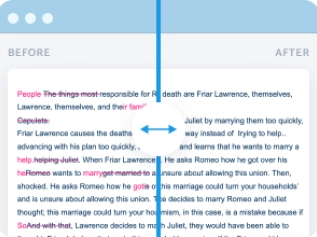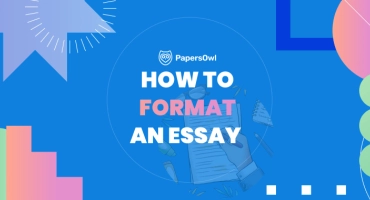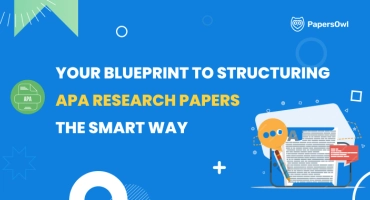APA Abstract Format with Guidelines and Examples
Table of contents
- 1 What Is an Abstract in APA?
- 2 APA Abstract Formatting Requirements
- 3 How to Structure an APA Abstract
- 4 Simple Steps for Creating a Strong APA Abstract
- 5 How to Write an Abstract APA and Avoid Common Mistakes
- 6 APA Abstract Examples
- 7 Additional Formatting Tips for APA Style Abstract
- 8 Useful Tools and Resources
- 9 Final Thoughts
An APA abstract example is a great way to understand what a strong abstract should look like before you begin writing your own. In APA format, this section plays a crucial role by providing the readers with a concise and clear summary of your study. It helps them decide quickly if your paper is relevant to their interests.
Are you a student working on a class assignment or a researcher preparing for publication? Knowing how to write an effective abstract is essential. This guide offers examples, simple explanations, and helpful formatting tips to support you every step of the way!

What Is an Abstract in APA?
This is a summary of your paper that appears on the second page (after the title page). Its essential goal is to give readers a quick overview of your research subject, the methods you used, the main findings, and the conclusions.
In APA style, this paragraph helps other researchers find your work in academic databases and understand the core ideas without reading the full paper. This concise summary is important for student writing and professional papers.
Following the APA 7th edition guidelines, the abstract should be able to stand on its own. That means it must be self-contained and clearly explain what your work is about from start to finish.
If you’re struggling to put it all together, you might consider using a service to finish my assignment and ensure your abstract meets all the necessary requirements.
APA Abstract Formatting Requirements
When writing a case study in APA format, it’s important to follow the specific rules that APA sets for abstracts. Here’s what to follow:
- Create a separate abstract page (this should be the second page of your research).
- The centered word “Abstract” should be bold and located at the top of the page.
- Use a single paragraph with no indent on the first line.
- Double-space your document.
- This paragraph should be between 150 and 250 words (check with your instructor or journal).
- Start the next line and add a list of keywords (italicize “Keywords” and separate them with commas).
- Insert the page number in the upper right-hand corner.
- Use Times New Roman 12 pt or another APA-approved font.
These APA abstract format rules come from the APA Publication Manual (7th edition) and should be applied by students and professionals.
How to Structure an APA Abstract
This paragraph usually includes four key parts: the purpose, methods, outcomes, and conclusions. Together, these create a clear and concise summary.
- The purpose explains what your paper is about and why it is significant.
- The methods describe how you explored the subject.
- The results highlight your essential findings.
- The conclusion shows what those findings mean or suggest.
In a typical APA assignment, unstructured sections are preferred unless your instructor says otherwise. Journal articles and professional papers often use structured abstracts.
APA also recommends adding keywords. These help with indexing if your study is published in a database. Keywords are important because they make finding your work easier for other researchers. Pick keywords that match your topic, research method, or group of participants. The APA guide recommends using three to five clear and relevant keywords. Make sure they reflect the core ideas in your work.
This step is especially helpful when using the APA outline format for research paper or submitting to an academic journal.
Simple Steps for Creating a Strong APA Abstract
✔️ Step 1: Write the purpose or objective. Begin by explaining your exploration’s main topic in one or two sentences. Share the research question or the study goal. Let the reader know what your paper is about and why it matters.
✔️ Step 2: Outline the methodology. Briefly describe how you did your research. Mention your methods, such as surveys, experiments, or data analysis.
✔️ Step 3: Summarize key results. Include the most important findings from your study. Keep it short and clear, and focus only on the most important results.
✔️ Step 4: Draw conclusions and implications. Explain what your results mean. What are the main takeaways? Why should others care about your findings?
✔️ Step 5: Format keywords. After the abstract, start a new line. Type “Keywords:” in italics, followed by 3 to 5 relevant words or phrases, separated by commas. Start the first line with a 0.5-inch indent.
Keywords: APA abstract example, research topic, student paper, academic writing.
How to Write an Abstract APA and Avoid Common Mistakes
Completing this paragraph means more than just summarizing your paper. You also need to avoid common errors that can weaken your abstract. Here are some mistakes to watch out for:
- Excessive detail or length; Don’t include too much background or minor points. Keep it short and focus only on the main purpose, methods, results, and conclusions.
- Missing key elements; Leaving out important parts like your results or conclusions makes your paragraph unclear or incomplete.
- Improper formatting; Follow APA rules for spacing, font (usually Times New Roman 12), alignment, and word count. The abstract should be on its own page, after the title page.
- Using citations; Avoid references or citations. This section should stand on its own.
- Skipping keywords; Keywords matter. They help others find your paper in databases. Always add relevant keywords at the end.
APA Abstract Examples
Below are three sample abstracts: one for a research paper, one for a literature review, and one for a theoretical paper. Each follows APA guidelines and shows a clear, simple style.
Example of a Research Paper Abstract
Abstract
This study explores the link between daily screen time and sleep quality in teenagers. A survey was conducted with 150 high school students. The results showed that students who used screens for more than four hours a day slept fewer hours and reported lower sleep quality. The findings suggest that heavy screen use may negatively impact teen sleep. Future studies should explore ways to reduce screen time for better health outcomes.
Keywords: sleep quality, teenagers, screen time, health, research study
Literature Review APA 7 Abstract Example
Abstract
This literature review examines recent studies on the impact of social media on mental health in young adults. Most findings suggest a connection between frequent social media use and higher levels of anxiety and depression. However, some studies highlight positive effects such as increased social support and community building. This review identifies patterns, gaps, and future directions in the current research.
Keywords: social media, mental health, young adults, literature review
Example of a Theoretical Paper Abstract
Abstract
This paper presents a new framework for understanding digital learning motivation in college students. Based on self-determination theory and recent online learning research, the model explains how autonomy, competence, and social connection affect student engagement. The framework may help educators design more effective virtual learning environments. Future theoretical work and testing are suggested.
Keywords: digital learning, motivation, self-determination theory, theoretical model, student engagemen
Additional Formatting Tips for APA Style Abstract
- Add a title page with your paper title, name, and school.
- Use 1-inch margins and double spacing.
- Align text to the left, but make it not justified.
- Include a References page at the end.
- Use a running head only for professional papers.
APA-style citations should match in-text and reference entries.
Useful Tools and Resources
Need help with APA formatting? Try these:
- APA Style Website – Official guide with examples and tutorials.
- Purdue OWL – Free, easy-to-follow APA style tips.
- Citation tools – Use Scribbr or Zotero to format references fast.
- Databases – Find research and examples of using APA style on JSTOR.
- APA Style Blog – Extra tips and updates from the APA team.
Final Thoughts
A research paper abstract example APA can help you see what a strong summary looks like. No matter your topic – psychology, literature, or data analysis – this part should give a clear picture of your exploration in just a few lines.
Stick to the key points: purpose, method, results, and conclusion. Use simple words. Don’t add citations or too much detail. Keep it within the word limit.
Follow APA formatting rules and look at good examples to guide you. With some practice, you can write an effective abstract that makes your work easier to find and understand.








